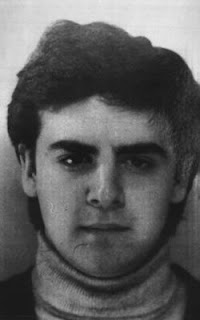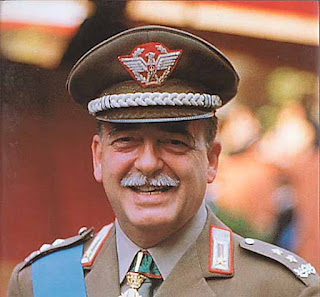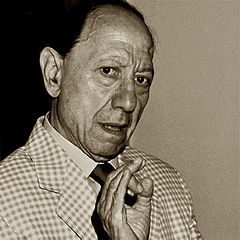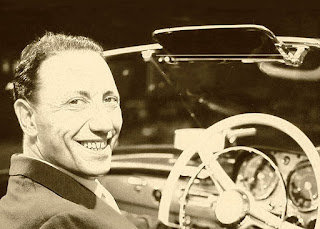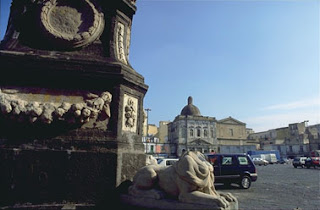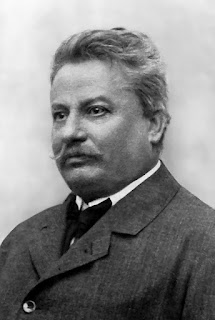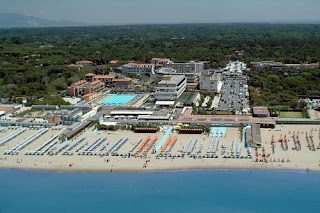Lead player with RAI orchestra considered a great of Italian music
 |
| Severino Gazzelloni was regarded as one of Italy's finest flautist |
He was known for his versatility. In addition to his proficiency in classical flute pieces, Gazzelloni also excelled in jazz and 20th century avant-garde music. As such, many musicians and aficionados regard him as one of the finest flute players of all time.
Gazzelloni also taught others to master the flute. His notable pupils included the American jazz saxophonist Eric Dolphy and the Dutch classical flautist Abbie de Quant.
The son of a tailor in Roccasecca, Gazzelloni grew up in modest circumstances yet had music around him from a young age as his father played in a local band. He taught himself music and became fascinated with the flute as an instrument, acquiring the technique to play it simply by practising for endless hours on his own.
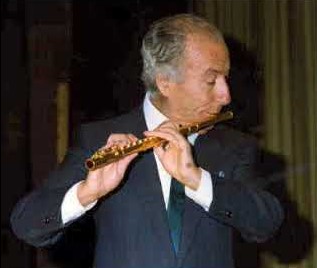 |
| Severino Gazzelloni's golden flute was made for him by a craftsman in Germany |
With Creati’s encouragement, Gazzelloni developed as a performer over the next few years and in 1934, at the age of 15, obtained a place at Italy’s premier conservatory, the National Academy of Santa Cecilia in Rome, where he graduated in 1942 under the guidance of the accomplished flautist Arrigo Tassinari.
During the war years he stayed in Rome, finding work in the orchestra at a variety theatre, where he met Alberto Semprini, who would go on to become director of the RAI National Symphony Orchestra.
When Gazzelloni played with that orchestra for the first time in 1944, it was called the Radio Roma Orchestra, led by Fernando Previtali. His debut appearance began an association that would last until the mid 1970s.
 |
| Gazzelloni was as comfortable playing jazz as he was with classical music |
His interest in avant-garde music developed after he had met the Venetian-born composer Bruno Maderna, through whom he was introduced to the Internationale Ferienkurse für Neue Musik - a summer school for ‘new music’ - that was held each year in Darmstadt, near Frankfurt.
Gazzelloni went to Darmstadt for the first time in 1952 and taught there continuously from 1956 to 1966.
In those years he developed friendships and professional relationships with some of the leading lights of the 20th century avant-garde movement, including Pierre Boulez, Karlheinz Stockhausen, Luigi Nono, Franco Donatoni, Olivier Messiaen, John Cage, Luciano Berio and Sylvano Bussotti.
 |
| The composer Igor Stravinsky composed music for Gazzelloni |
Gazzelloni is said to have enjoyed the informality of the jazz scene and one of his most successful tours came in 1976, when he was accompanied by the eminent classical pianist Bruno Canino and a jazz combo that comprised some of Italy’s top names, including the jazz piano player Enrico Intra, the saxophonist Giancarlo Barigozzi, bass guitarist Pino Presti, drummer Tullio De Piscopo and lead guitarist Sergio Farina.
At his peak as a soloist, Gazzelloni played as many as 250 concerts a year, as well as teaching at the Academy of Santa Cecilia and at the Chigiana Academy in Siena.
He died in Cassino, not far from Roccasecca, in 1992 in a clinic where he had been undergoing treatment for a brain tumour.
Two years after his death, the municipality of Roccasecca launched a musical festival in his honour and the event, the International Festival Severino Gazzelloni, is today an annual month-long event staged in August and September, supported by the Licinio Refice Conservatory of Frosinone and the University of Cassino and Southern Lazio, with sponsorship from businesses in the area.
 |
| The remains of the castle at Roccasecca |
The town of Roccasecca occupies a strategic position at the entrance to two narrow gorges that provide access to the Valle di Comino below the slopes of Monte Asprano. It has a castle built in the 10th century at the behest of the Abbot of Montecassino. The abbot later put the castle in the control of the D’Aquino family and it was there that Tommaso D’Aquino, the Dominican friar who was canonized as Saint Thomas Aquinas fifty years after his death, was supposedly born in 1225. The castle fell into disrepair in the 17th century.
 |
| The entrance to the Conservatory of the Academy of Santa Cecilia |
The National Academy of Santa Cecilia is one of the oldest musical academies in the world. It was founded in Rome by Pope Sixtus V in 1585 at the Church of Santa Maria ad Martires, better known as the Pantheon. Over the centuries, many famous composers and musicians have been members of the Academy, which lists opera singers Beniamino Gigli and Cecilia Bartoli among its alumni. Since 2005 the Academy’s headquarters have been at the Parco della Musica in Rome, which was designed by the architect Renzo Piano, but the historic conservatory in Via dei Greci remains, offering preparatory courses, and also houses the Italian Institute for Music History.
More reading:
How avant-garde composer Luigi Nono saw music as a form of political expression
Why Pino Presti is an important figure in Italian contemporary music
The brilliance of classical flute player Leonardo De Lorenzo
Also on this day:
1905: The birth of Michele Navarra - practising doctor and Mafia boss
1932: The birth of academic and novelist Umberto Eco
1948: The birth of anti-Mafia activist Giuseppe Impastato
Home
